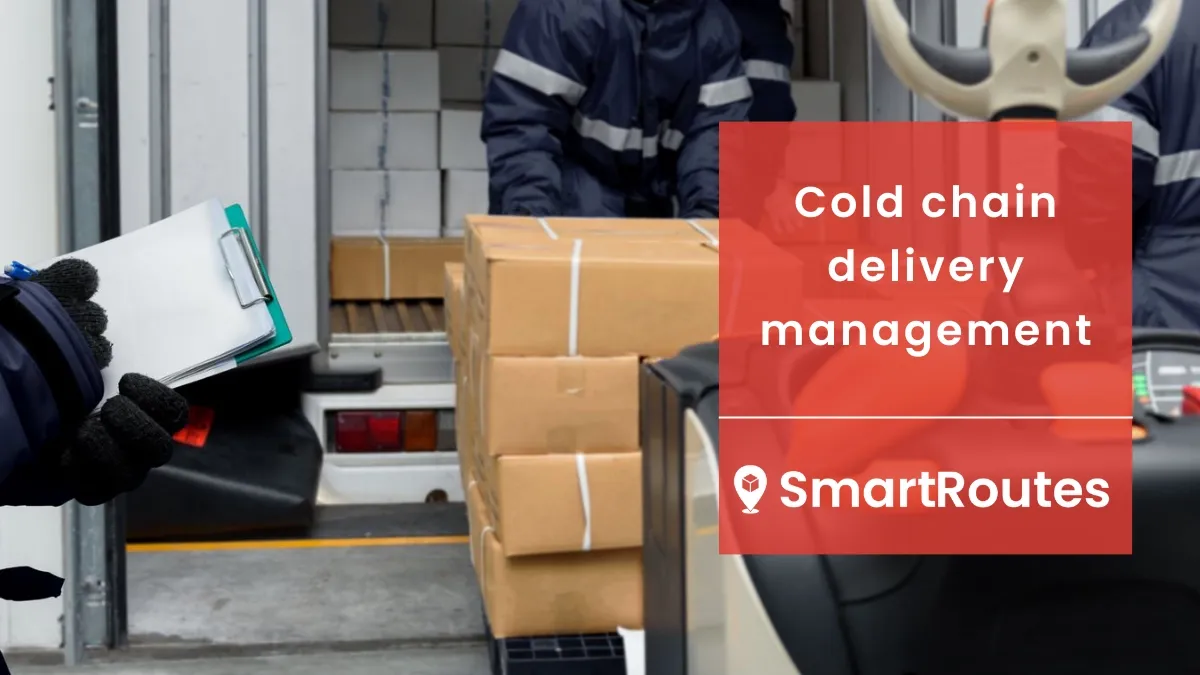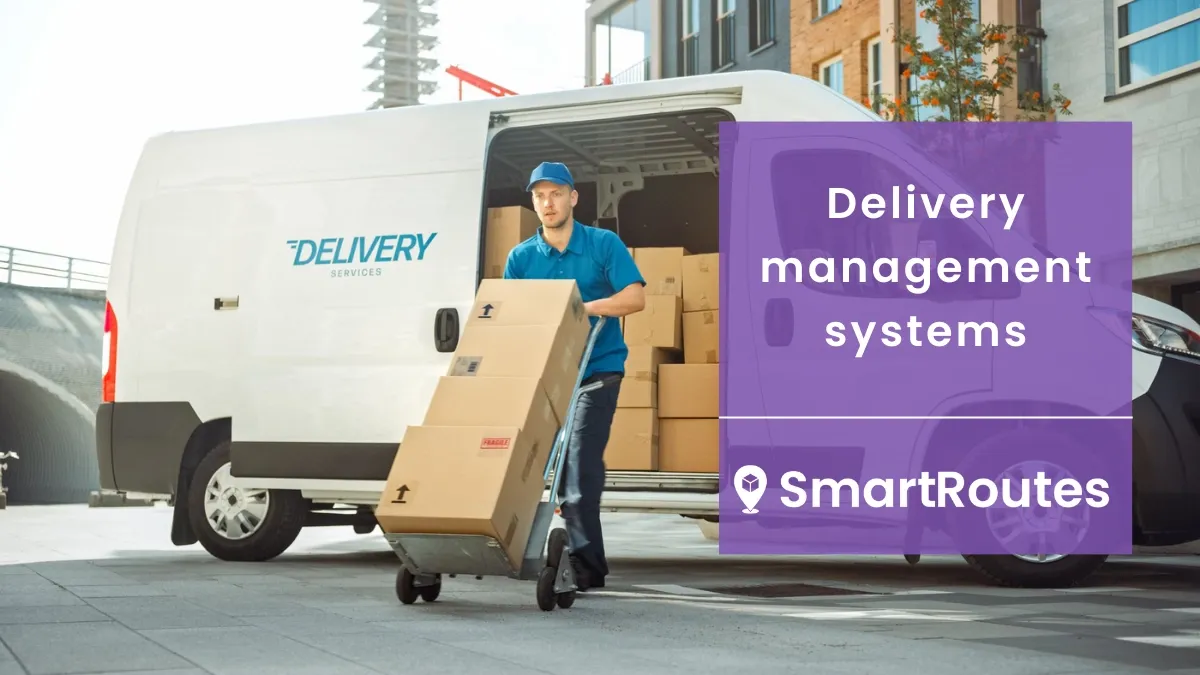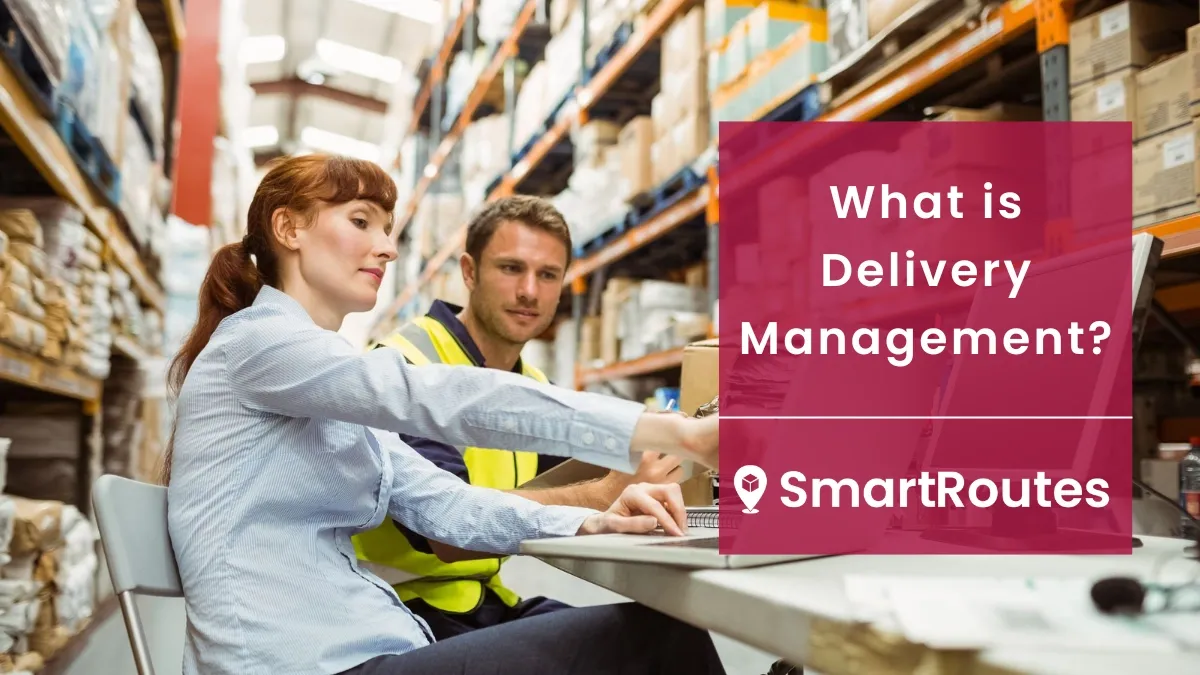Cold Chain Delivery Management
Cold chain logistics require a very high level of organization and tracking to ensure the chain is not broken at any point and teams can prove this.

Cold chain logistics involves low temperature supply chain made up of refrigerated vehicles, warehouses and distribution methods. It is critical that a cold chain is unbroken during the distribution process as even a temporary break in the temperature control can be devastating to the product. Cold chain is common in food distribution, pharmaceutical and chemical industries and even grocery delivery. In fact, it has been available ever since refrigeration has been commercially possible.
For companies involved in cold chain operations planning needs to be rigorous. Speed of distribution is key in helping to avoid breaks and minimize the high costs associated with keeping temperatures controlled.
Our agenda for this blog includes:
- What is cold chain logistics?
- Challenges of cold chain distribution
- What are the elements of a cold chain delivery system?
- How to deliver successfully in cold chain with SmartRoutes
What is Cold Chain Logistics?
Cold chain logistics involves the transportation and distribution of temperature-sensitive products. It is frequently used in the food, produce, health care, and pharmaceutical industries to transport perishable products that require temperature controls in storage and transit.
For example, meat products like chicken and fish have to be stored at sub-zero temperatures to prevent spoilage from harmful bacteria. Cold chain logistics preserves the integrity of shipments like meats and vegetables that require specific temperatures in their supply chains.
In modern economies cold chain is made up of unbroken links between refrigerated distribution warehouses, vehicles and end consumers who have refrigerated means to receive consignments. This has been most apparent in the stories around Covid vaccine distribution recently.
However, all manner of products require cold chain systems such as foodstuffs and chemicals. If you ever see vehicles with the spinning air conditioning units mounted on their roofs then you are likely looking at a cold chain distribution vehicle.
What are the Elements of a Cold Chain Delivery System?
Packaging that is suitable for cold chain such as vacuum packs, perforated boxes, air conditioned shipping containers, blast freezer warehouses and trucks and vans with air conditioning built-in.
All of these elements need to be tightly controlled as even a small increase in temperature can result in massively increased degradation timelines for the products being shipped. Sensors systems and monitors that can help with reporting and alerting to problems are critical.
As a cold chain provider you need to know exactly what temperature is optimum for your product, what hardware you will need to get it from A to B safely, and how can you say with certainty that what you have done is correct, i.e. do you have monitoring at all stages of the process.
SmartRoutes Route Planning Software
Streamline your entire delivery process, all from one platform

Challenges of Cold Chain Logistics
- Cost of implementing total cold chain accuracy and monitoring
- Airflow management in transit vehicles can be difficult with loads needing to be evenly distributed in vehicles to allow air to travel throughout.
- Breaks in the process can occur easily as a result of power failures, human error and particularly in moving from one holding area to another, for example, from warehouse to vehicle.
- De-vanning and cross-docking protocols to be implemented successfully every time a van is unloaded or you need to move product from one vehicle to another.
- Reporting on integrity of logistics operations and proving that cold chain was maintained throughout involves expensive monitoring hardware and software reporting tools.
How to Deliver Successfully in Cold Chain with SmartRoutes
Set up priorities
In the SmartRoutes platform you can set up custom fields to nominate any variable involved in a delivery. You can also set up priority customers, products or stops that need to prioritized for delivery. This can be valuable in cold chain operations that are mixed with less perishable or sensitive materials. Complete the most important deliveries first to ensure they are completed successfully and without damage to the product. Allied to this, you might want to set up contactless delivery for some of your customers depending on Covid circumstances.
Set skills of delivery teams
Your delivery drivers may have certain skills that are necessary for a delivery. Perhaps they have cold chain accreditation, or they have experience in handling sensitive deliveries. Setting skills for drivers allows the SmartRoutes algorithm to match the right drivers with the right skills to the right delivery.
Ensure you match the vehicles to the consignment
Not all of your vehicles might be suitable for all your consignments. They might to be a certain size, have a specific type of air conditioning unit, or have certain monitoring hardware installed in order to complete the cold chain delivery effectively. You can set up territories with certain vehicles assigned to that territory so the correct vehicle is paired with the right consignment.
Maintain a vehicle inspection roster
The most common way for cold chain deliveries to fail is a failure of the delivery vehicle. Unlike blast freezer warehouses which are static and well serviced with back-up plans in case of emergency, vehicles are far more precarious by their nature. Vehicle breakdowns, crashes, and even traffic delays can be enough to result in consignments perishing or the refrigeration units stopping working. If you have a regular inspection of your fleet and a pre-delivery inspection then you can avoid some of these simple but critical failures when out on the road.
Have a cold chain delivery checklist
A delivery checklist can help you to stay focused on the things that need to be done to ensure the vehicle and consignment arrives safely and on-time ETA.
Feel free to use the following:
- Make sure the refrigeration unit is running smoothly.
- Make sure you have enough diesel for the trip.
- Check your load temperature before loading.
- Make sure the truck is precooled to remove residual heat.
- Perform a defrost half an hour after loading to clear the evaporator coil and ensure maximum cooling performance.
- Inspect the truck for refrigerated air leakage.
- Check the body for condensation when loaded to spot any possible body damage and thermal breaks in the insulation.
- Check that the doors are securely sealed.
Ensure consignments are correctly loaded to ensure airflow and ease of access based on stops order
Using SmartRoutes can help your dispatch and warehousing team to understand the vehicles available to them on a given day and at a given time. They must ensure that the vehicle is correctly loaded to allow airflow around the consignment and avoid hot spots in the cargo section. Loading should also be done taking into account the order of stops so drivers do not have to spend unnecessary time searching for the delivery package when at their destination.
Seal vehicles until delivery
All vehicles, once loaded, should be closed and sealed ready for departure. They should not be opened or left open during the loading phase. With SmartRoutes you can automatically create order loads for a vehicle from your existing database or your online ordering system. We can integrate this information with the SmartRoutes platform to automatically create an order list, assign it to a driver, and allow your warehouse or picking team to have the order ready to go when the vehicle arrives for loading. This level of organization has a knock-on effect at the depot by minimizing the time spent loading and discussing the days operations. It is all pre-organized and efficient. Drivers leave faster and deliveries are made more efficiently.
API
The SmartRoutes API can integrate with any system and connect in the relevant information to assist with deliveries. Your cold chain delivery will have other systems that should tie in with SmartRoutes to optimize your delivery routing and ensuring better efficiency in real-world conditions on the road.
Fleet tracking
A cold chain is dependent on the moving vehicles in the real world but no cold chain distribution manager or fleet manager should be without GPS fleet tracking on all their vehicles. With SmartRoutes mobile app you can see where vehicles are at all times and if they have diverged from the optimal route assigned to them. This level of oversight is essential to ensure successful deliveries and reporting on operations.
Live consignment tracker
Whether you are delivering produce to a retailer, medicines to a hospital or anything else in cold chain, you can be sure the end recipient, your customer will want to know exactly where it is on its journey. Using SmartRoutes' live package tracker your customers can locate on a live-map where their vehicle is and see it moving in real-time. This gives them peace of mind and you don't have to update them on progress by other means. It also cuts out missed deliveries or customers not being ready to receive their consignments. This can all be done with your own branding on the live tracker for a great delivery experience.
Optimize routes to reduce risk
It might seem obvious by now but SmartRoutes is primarily about route optimization software that allows you to get your sensitive cargo to your customers. With proven savings of 33% on miles driven versus human route planning there is a significant reason to use SmartRoutes to make sure you save money on fuel and wages while getting your packages safely to customers without any time wasted. Getting the SmartRoutes platform and delivery driver app will be a wise investment for your team.
Choose SmartRoutes for Cold Chain Delivery Management
Looking for a cold chain delivery management solution? Look no further than SmartRoutes. Our platform will ensure you delivery on time, every time. Reduce human error from manual route planning and ensure your customers are happy with their delivery service. Try SmartRoutes for free over the next 7 days!
Frequently asked questions
1. What is cold chain delivery management?
Cold chain delivery management refers to the process of controlling, monitoring, and maintaining the uninterrupted temperature-controlled supply chain necessary for perishable or temperature-sensitive goods. It involves a series of logistical and technological procedures to ensure that products, such as pharmaceuticals, food, and other perishables, are transported and stored within specified temperature ranges from production to consumption. This management system is crucial for preserving the quality, safety, and efficacy of these sensitive goods throughout the entire supply chain.
2. What are the key challenges faced in cold chain logistics?
Several challenges are inherent in cold chain logistics, including maintaining consistent temperature conditions throughout transportation and storage, ensuring compliance with stringent regulations, dealing with equipment failures, minimizing product spoilage or damage, managing inventory effectively, and navigating complex transportation routes efficiently. Additionally, factors like environmental variations, unexpected delays, and human error can also pose significant challenges to maintaining the integrity of the cold chain.
3. How does technology optimize cold chain delivery management?
Technology plays a pivotal role in optimizing cold chain delivery management by offering advanced solutions for monitoring, tracking, and controlling temperature-sensitive products. Various technologies such as temperature monitoring devices and GPS tracking systems can be employed. These technologies provide real-time data on temperature, humidity, location, and other critical parameters, allowing for proactive decision-making, rapid response to deviations, and ensuring compliance with industry standards. Additionally, technology assists in route optimization, inventory management, and predictive maintenance, ultimately enhancing efficiency, reducing losses, and maintaining product quality throughout the cold chain logistics process.
If you enjoyed this blog, you might also be interested in:








